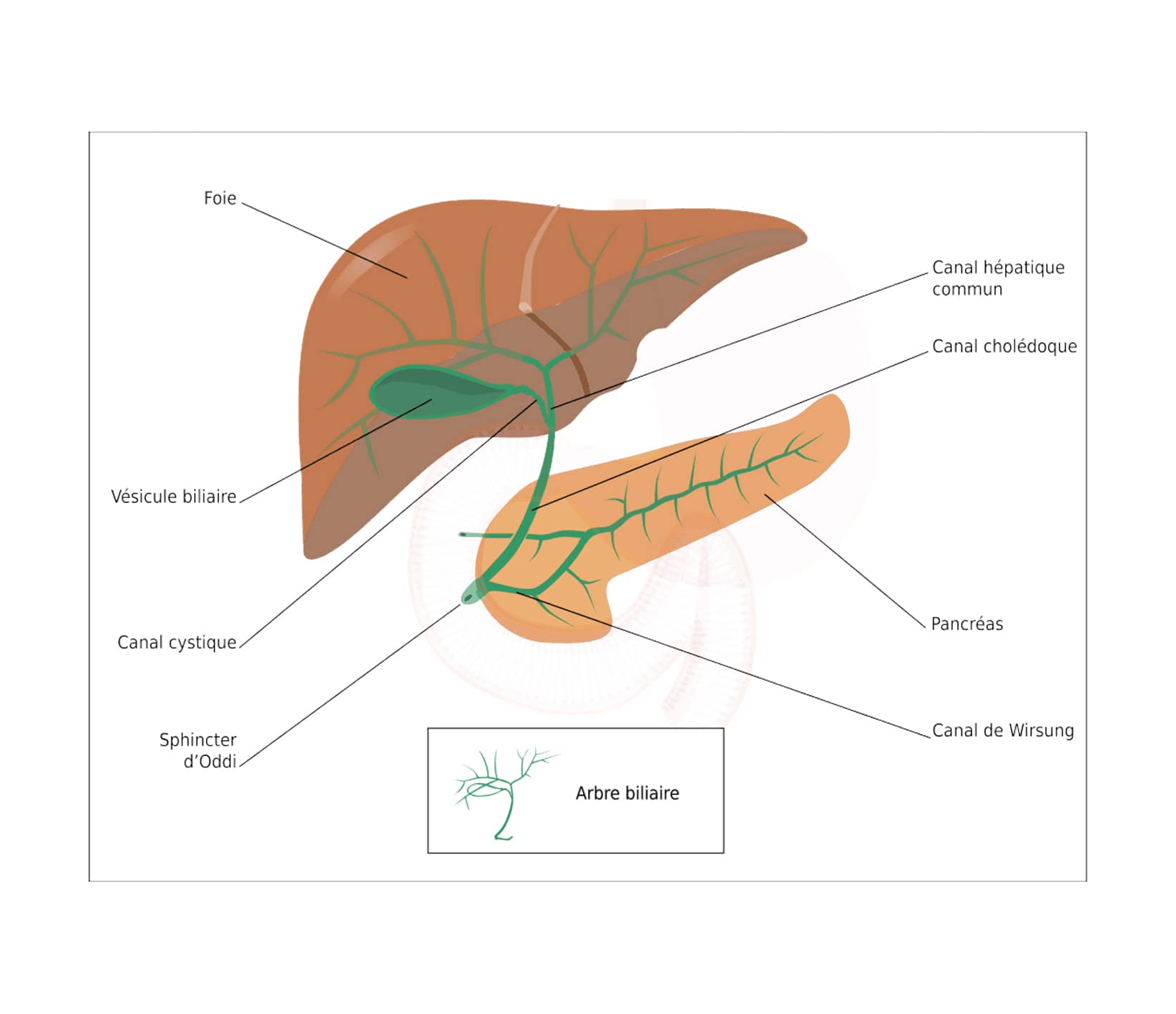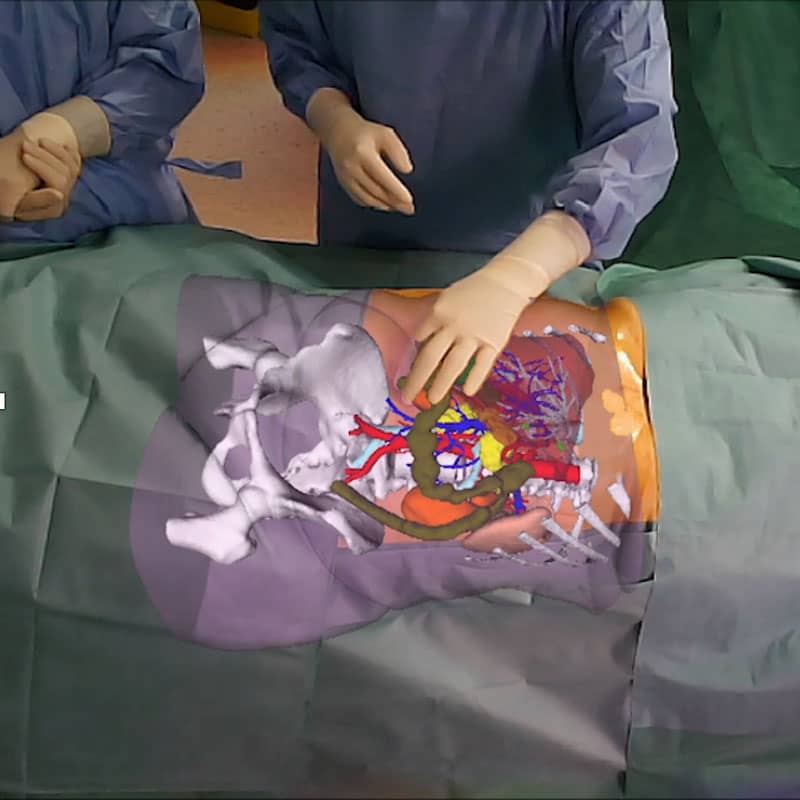Hepatobiliary and Pancreatic Unit

The gallbladder and surrounding liver parenchyma are resected as a single unit.
Before the intervention
THE CONSULTATION WITH THE SURGEON
Before a pancreatectomy, the patient undergoes various examinations to determine the type of pancreatic lesion and the indication for surgical treatment.
IHU Strasbourg benefits from the latest technological advances in diagnostic imaging tools such as: ultrasound, CT or scanner, MRI, angiography, 3D reconstruction imaging, etc. The result of these images makes it possible to create a three-dimensional model of the patient’s organ, thus obtaining an identical reconstruction which allows personalized solutions to be defined.
With the results obtained, the surgeon indicates to the patient the objectives of the operation, the technique used and the possible postoperative consequences and complications.
THE CONSULTATION WITH THE ANESTHESIST
Bisegmentectomy is performed under general anesthesia.

Features
This procedure requires the one-piece ablation of the area which contains the gallbladder cancer with the sectioning of its venous, arterial and biliary pedicles.
A slice of the liver parenchyma is necessary to complete the procedure. The transection can be performed with intermittent clamping of the hepatic pedicle, that is, a temporary interruption of blood flow entering the liver to reduce bleeding.
A hepatic pedicle dissection is performed to resect the metastatic lymph nodes.
Procedures
The procedure can be performed by laparotomy, laparoscopy and robotic-assisted surgery.
The operating time is approximately 3 hours.
The length of hospitalization is approximately 5 days.
Benefits and advantages
It is the only intervention that can guarantee long-term survival in cases of gallbladder tumors.
Risks and complications
- Leak from the bile ducts of the hepatectomy section (biliary fistula).
- Postoperative hemorrhages.
Mortality linked to the intervention: <1%.
Useful information
Download guide: Liver cancer treatments
by National Cancer Institute, e-cancer.fr
Cancer Info Line
Support throughout your care pathway
Quality patient care is an essential objective, and the patient is at the heart of our concerns.


